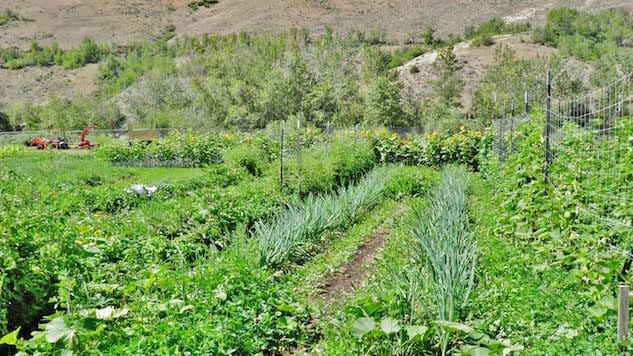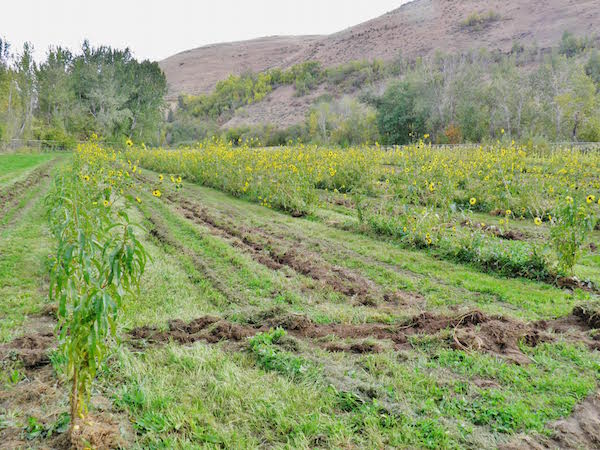Veganic Farming Takes the Cruelty out of Agriculture
Photos by Helen Atthowe
Unfortunately for vegans, traditional fruit and and veggie farming typically utilizes animal-based ingredients like fish bits or bone meal in fertilizer. That fact is a bit of a buzzkill for anyone who wants to avoid hurting animals and insects.
But tradition isn’t the only way to do things. Veganic farming refers to a different kind of practice that minimizes harm to all living beings.
“Veganic farming is a way of sustaining ourselves without contributing to the death of other creatures,” explains Helen Atthowe, a veganic farmer who’s worked as an extension agent for Montana State university and horticulture research assistant for Oregon State University. “It is about nonviolence to the earth, animals, birds, insects, amphibians and to ourselves.”
Atthowe has always been a fruit and vegetable farmer, but previously utilized traditional fertilizers and such. It was after watching the famously heart-wrenching animal advocacy film, Earthlings, that she was motivated to switch to a veganic process.
So how does veganic farming work? “As in certified organic farming, there are no synthetic pesticides, no artificial fertilizers, and no genetically modified organisms (GMOs),” says Atthowe. “Unlike organic farming, veganic farming does not use animal manure, animal bodies or animal parts (such as fertilizers made from bone meal, blood meal, feather meal or liquefied fish bodies).”
In essence, veganic farms are complex systems where native animals, birds and insects are not driven away, but are welcome to co-habitate. Insect control happens naturally, as part of the overall ecosystem. “Biological control of insect and disease pests occurs naturally by creating or maintaining habitat for pest-eating birds, bats, insects, fungi, bacteria and soil microorganisms,” Atthowe explains.
 Photo courtesy of Helen Atthowe
Photo courtesy of Helen Atthowe
-

-

-

-

-

-

-

-

-

-

-

-

-

-

-

-

-

-

-

-

-

-

-

-

-

-

-

-

-

-

-

-

-

-

-

-

-

-

-

-

 Photo courtesy of Helen Atthowe
Photo courtesy of Helen Atthowe






































